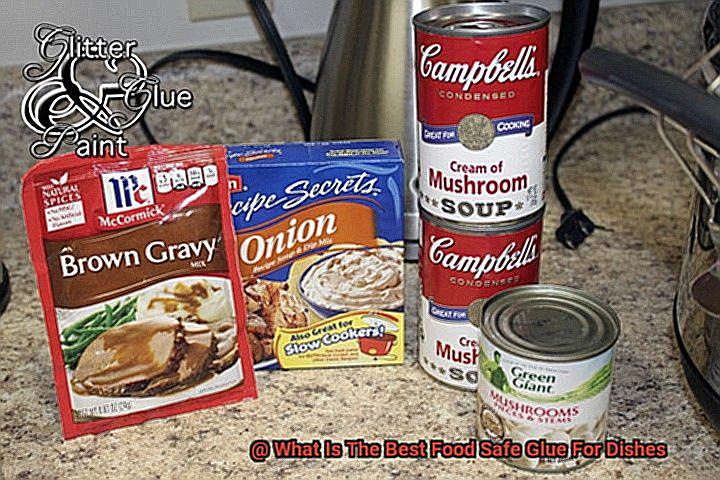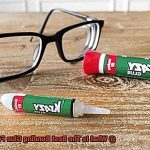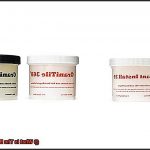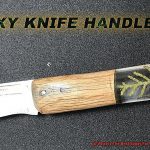We all know that sinking feeling when our favorite dish or treasured porcelain breaks into a million heartbreaking pieces. Whether it’s a sentimental keepsake or a masterpiece of your own making, saving these shattered gems becomes a personal quest.
But fear not, my friends. Today, we’re going on a journey to discover the secret behind restoring your beloved dishes and ceramics to their former glory. Get ready to unveil the best food-safe glue that will mend your broken treasures with safety and strength. So put on your apron, grab your creative hat, and let’s dive into the world of adhesive magic.
In this ultimate guide, we’ll explore the realm of food-safe glue and introduce you to the top contenders known for their reliability in withstanding the rigors of everyday kitchen use. Whether you’re dealing with an unexpected dinner party mishap or longing to piece together a precious family heirloom, we’ve got you covered.
From delicate teacups to sturdy serving dishes, we’ll reveal our top recommendations while sharing valuable insights on adhesive strength, simple application techniques, and long-lasting results. So without further ado, let’s unlock the adhesive wizardry that will allow you to cherish your creations for years to come.
Types of Food Safe Glue
Contents
- 1 Types of Food Safe Glue
- 2 Advantages and Disadvantages of Epoxy Resin
- 3 Advantages and Disadvantages of Cyanoacrylate Glue (Super Glue)
- 4 Understanding Labels and Safety Requirements for Food Contact Surfaces
- 5 Curing the Glue for Maximum Strength
- 6 Tips for Using Glue on Dishes
- 7 Considerations When Choosing a Food Safe Glue
- 8 Other Options: Silicone Adhesives
- 9 Conclusion
Accidents happen, and when your favorite dish shatters into pieces, it can be disheartening. But fear not. With the right food safe glue, you can repair your dishes and restore them to their former glory. In this article, we will explore the different types of food safe glue commonly used for dishes, providing you with valuable insight to help you choose the best option.
Epoxy Resin – The Unbreakable Bond:
When it comes to bonding dishes, epoxy resin is a top choice. This adhesive creates an incredibly strong and durable bond that can withstand heat, water, and chemicals. It is especially suitable for repairing ceramic, glass, and porcelain dishes. Once cured, epoxy resin forms an unbreakable bond that ensures your repaired dish will last for years to come.
Cyanoacrylate Adhesive – Quick and Reliable:
If you need a speedy solution, cyanoacrylate adhesive, commonly known as super glue, is your go-to option. This type of glue dries quickly and forms a strong bond between the broken pieces. It is crucial to ensure that you use a super glue that is specifically labeled as food safe. This will give you peace of mind that no harmful chemicals will leach into your food.
Silicone Adhesive – Flexibility and Water Resistance:
For dishes made of flexible materials like silicone, silicone adhesive is the perfect choice. This adhesive creates a flexible and waterproof bond, making it ideal for dishes that come into contact with liquids. Whether it’s a silicone baking mold or a rubber spatula handle, silicone adhesive will provide a reliable and long-lasting repair.
Food-Grade Adhesive Tape – Temporary Fix:
In situations where you need a temporary fix for small cracks or breaks in dishes, food-grade adhesive tape can be a handy solution. Made from materials specifically deemed safe for food, this tape provides a quick patch-up until you can find a more permanent solution. However, keep in mind that it may not be as durable as other types of glue and may need to be replaced periodically.
Choosing the Right Glue:
When selecting a food safe glue for your dishes, always look for products that are explicitly labeled as food safe. This ensures that the glue has undergone rigorous testing and has been approved for use with food. Additionally, carefully follow the manufacturer’s instructions regarding application and curing times to achieve the best results.
Conclusion:
Accidents don’t have to mean the end of your cherished dishes. With the right food safe glue, you can repair them and continue enjoying their beauty and functionality. Whether it’s epoxy resin for an unbreakable bond, cyanoacrylate adhesive for a quick fix, silicone adhesive for flexibility and water resistance, or food-grade adhesive tape for temporary repairs, there is a glue option for every type of dish.
Advantages and Disadvantages of Epoxy Resin
When it comes to repairing your favorite dish, epoxy resin is a popular choice that offers several advantages. First and foremost, epoxy resin boasts excellent bonding strength, ensuring a strong and durable bond that can withstand regular use and washing. It’s like giving your dish a second chance at life.
Not only is epoxy resin strong, but it’s also food-safe. Once fully cured, epoxy resin is considered safe for use with food. This means that you can repair your dish without worrying about any health risks. Just make sure to use epoxy resin products specifically labeled as food-safe to ensure the highest level of safety. Talk about peace of mind.
Versatility is another great feature of epoxy resin. It can be used on various materials such as ceramic, glass, porcelain, and even some plastics. So no matter what material your dish is made of, epoxy resin can come to the rescue.
But like any product, epoxy resin does have its drawbacks. One disadvantage is its long curing time. Compared to other adhesives, epoxy resin takes longer to cure. You might have to wait several hours or even days before you can use the repaired dish. Patience is key.
The mixing and application process of epoxy resin can also be a bit tricky for beginners. It usually comes in two parts – resin and hardener – that need to be mixed together in specific ratios. If you don’t get the ratios right or don’t mix them thoroughly, you may end up with weak bonds or poor adhesion. So pay attention and follow the instructions closely.
Another downside is that epoxy resin has a tendency to yellow or darken over time when exposed to sunlight or UV rays. This might affect the appearance of the repaired dish, especially if it’s transparent or light-colored. But fear not. There are epoxy resin products available that offer UV resistance, minimizing the yellowing effect.
Lastly, while epoxy resin provides excellent bonding strength, it can be relatively brittle once fully cured. This means that dishes repaired with epoxy resin may be more prone to cracking or breaking if subjected to excessive force or impact. Handle with care.
Advantages and Disadvantages of Cyanoacrylate Glue (Super Glue)
Well, worry no more because cyanoacrylate glue, also known as super glue, is here to save the day. This popular adhesive is a handy tool for all your dish repair needs. But before you go crazy with the glue, let’s take a closer look at its advantages and disadvantages.
Let’s start with the good stuff. One of the greatest advantages of cyanoacrylate glue is its ability to create a strong bond in no time. Seriously, this stuff is like the superhero of adhesives. It forms an incredibly durable and permanent bond between surfaces, ensuring that your repaired dish will stay intact even if you accidentally drop it (oops.).
And speaking of time, cyanoacrylate glue dries faster than you can say “dish repairs.” You won’t have to wait for hours for it to set. In fact, it typically dries within seconds to minutes, allowing you to get back to using your favorite dish in no time.
Now let’s talk versatility. Cyanoacrylate glue can bond a wide range of materials commonly found in dishes, such as ceramics, glass, plastic, and even some metals. So whether you’ve cracked your favorite ceramic plate or chipped your fancy glass bowl, super glue has got you covered.
But as with any superhero, there are a few weaknesses. One major drawback of cyanoacrylate glue is its lack of flexibility once cured. It becomes rigid and brittle, making it prone to breaking if subjected to excessive force or stress. So while it’s great for fixing cracks or chips in your dish, it may not be the best option for repairing something that needs a little more give.
Another downside is that cyanoacrylate glue is not entirely water-resistant. Sure, it can handle some moisture, but prolonged exposure to water or immersion in liquids can weaken the bond over time. So if you’re planning on using your repaired dish for soaking or washing, you might want to consider a different adhesive.
And let’s not forget about safety. Cyanoacrylate glues can be toxic if ingested or if they come into contact with your skin or eyes. So be sure to handle them with care, use protective gloves, and work in a well-ventilated area when using super glue for dish repairs.
Understanding Labels and Safety Requirements for Food Contact Surfaces
Today, we’re diving into the world of glues and their importance when it comes to our beloved dishes. We’ll explore the labels and safety requirements that you need to keep an eye out for when selecting a glue for food contact surfaces. So, grab a cup of coffee, put on your thinking caps, and let’s get started.
Understanding Labels: The Superpower of Information
Labels on glue products are like secret codes that hold the key to your dish-saving success. They provide crucial information about the glue’s safety and suitability for food contact surfaces. Look for labels indicating the glue is “food safe” or “FDA approved.” These labels ensure that the glue meets the necessary standards set by the Food and Drug Administration (FDA). It’s like having a superhero endorsement for your glue.
Safety Requirements: Shielding Your Dishes from Harm
The FDA has established guidelines for materials used in food contact surfaces, including adhesives. These guidelines ensure that glues don’t transfer harmful chemicals to your food, affect its taste or odor, or get damaged by heat, moisture, or kitchen chemicals. By understanding these requirements, you can rest assured knowing that your dishes are protected from any potential harm.

Certifications: Extra Assurance for Your Dish-Saving Quest
In addition to FDA approval, some glues may carry certifications from organizations like NSF International or the European Food Safety Authority (EFSA). These certifications further validate their safety for use with food. It’s like having a sidekick vouching for your glue’s trustworthiness.
Proper Usage: Following Instructions to Save the Day
Remember, even if a glue is labeled as “food safe,” it’s essential to follow proper usage instructions. Each glue has its unique curing time, and allowing it to fully cure ensures maximum safety for your dishes. So, be patient, fellow heroes, and give your glue the time it needs to work its magic.
Curing the Glue for Maximum Strength
In this guide, we will explore the different methods for curing glue to achieve maximum strength when repairing dishes. With these techniques, you’ll be able to rescue your beloved dinnerware and extend their lifespan. So, let’s dive in and discover the secrets of curing glue like true superheroes.
Air Drying:
Air drying is the simplest method of curing glue. By allowing the adhesive to cure at room temperature naturally, the water or solvent in the glue evaporates, forming a solid bond. This method is convenient for small repairs but may require longer curing times.
Heat Curing:
If you’re looking for a faster curing process, heat curing is your go-to method. Exposing the glued area to heat accelerates the curing process and enhances bond strength. But remember, caution is key when using heat, especially with delicate dishes that may not withstand high temperatures.
UV Light Curing:
For those seeking rapid curing times and high bond strength, UV light curing is a fantastic option. UV-curable adhesives contain photoinitiators that react when exposed to ultraviolet light, triggering the curing process. Although it requires a UV light source, this method offers quick results and can reach even hard-to-reach areas.
Factors for Stronger Bonds:
Proper surface preparation is crucial for achieving maximum bond strength. Ensure surfaces are clean, dry, and free from grease or residue that could hinder bonding. Applying sufficient pressure during curing also enhances the bond strength – use clamps or weights to hold glued pieces together tightly.
Conclusion:
Congratulations, my fellow dish-saving superheroes. You now possess the knowledge to cure glue for maximum strength when repairing dishes. Remember to follow manufacturer instructions based on the type of glue you’re using and choose the appropriate curing method accordingly.
Whether you opt for air drying, heat curing, or UV light curing, proper surface preparation and sufficient pressure application will ensure your repaired dishes stand the test of time. Now, go forth and save your dishes with your newfound glue-curing expertise.
Tips for Using Glue on Dishes
With the right glue and some handy tips, you can restore it to its former glory.
But before you reach for any adhesive, it’s crucial to choose a food-safe option specifically designed for dishes. Let’s dive into the world of glues and discover why selecting the right one is essential for maintaining the safety and integrity of your kitchenware.
Choose Food-Safe Adhesives
When it comes to gluing dishes, regular craft glues or super glues won’t cut it. These adhesives may contain harmful chemicals that can seep into your food, posing serious health risks. Instead, opt for food-safe adhesives explicitly designed for use on ceramics and glass. Look for epoxy resin or cyanoacrylate glue labeled as food safe. These options provide a secure bond without compromising your health.
Cleanliness is Key
Before applying any glue, ensure that both the dish and the broken piece are thoroughly clean and dry. Grease, oils, or dirt can interfere with the adhesive bond and weaken the repair. Give them a gentle wash with soap and water, ensuring they’re squeaky clean before beginning the restoration process.
Apply Sparingly
When it comes to glue, less is more. Applying an excessive amount can lead to unsightly oozing and possible contamination of your food. Instead, apply a thin, even layer of glue on both surfaces for a secure repair. This ensures that the bond remains strong while keeping your dish looking pristine.
Give it Some Pressure
To achieve a strong bond between the broken pieces, apply pressure to the repaired area for an appropriate amount of time. Some adhesives require longer drying or curing times, so be sure to follow the manufacturer’s instructions for the best results. Patience is key.
By providing adequate pressure and allowing sufficient time for the adhesive to cure, you ensure a long-lasting repair that can withstand the rigors of everyday use.
Handle with Care
While repaired dishes may be labeled as dishwasher-safe, it’s still wise to hand wash them. Dishwasher detergents and high temperatures can gradually degrade the adhesive over time, potentially causing the repair to fail. Show your repaired dishes a little extra TLC by washing them gently by hand. This ensures their longevity and maintains the integrity of the adhesive bond.
Considerations When Choosing a Food Safe Glue
When selecting a food safe glue, there are several important considerations to keep in mind. Your choice should be based on the type of food you’re working with, the environment in which it will be used, and the materials being glued together.
First and foremost, it is crucial to choose a glue that is labeled as “food safe” or “FDA approved.” This ensures that the glue meets the necessary safety standards and will not leach harmful chemicals into your food. Look for glues that are specifically formulated for use in food contact applications.
Next, consider the adhesive strength of the glue. Different materials require different levels of bond strength. For example, if you are working with ceramic or glass dishes, you will need a glue that has a high adhesive strength to withstand everyday use and cleaning. On the other hand, if you are working with more delicate materials like paper or cardboard, a lower adhesive strength may be sufficient.
The drying time of the glue is another important factor to consider. Some glues dry quickly, while others require longer curing times. Depending on your project, you may need a glue that allows for adjustment time before it sets completely. Consider your timeline and choose a glue that fits your needs.
Temperature resistance is also crucial when choosing a food safe glue. Dishes often experience temperature extremes, such as being placed in the oven or dishwasher. It is important to select a glue that can withstand these conditions without losing its adhesive properties or releasing harmful fumes.
Flexibility is another consideration when choosing a food safe glue. Dishes may undergo slight movements or vibrations during use, so it is important to select a glue that can accommodate these movements without cracking or breaking.
Finally, always follow the manufacturer’s instructions when using a food safe glue. Some dishes may have specific requirements or limitations when it comes to gluing them together. Ignoring these instructions could compromise the safety and integrity of your dishes.
Other Options: Silicone Adhesives
Are you tired of unsightly cracks in your favorite dishes? Concerned about harmful bacteria hiding in hard-to-reach crevices? Look no further. In this blog post, we’ll dive into the world of silicone adhesives and discover why they’re the perfect solution for all your food-safe gluing needs.
Safety First:
When it comes to our health, caution is key. Silicone adhesives provide a safe and secure bond that is free from harmful chemicals. Designed specifically for food-grade applications, they ensure no unwanted substances leach into your delicious meals. So glue with confidence, knowing your dishes are safe to use.
Versatility at Its Best:
Silicone adhesives are like the Swiss Army knife of glues. Their exceptional bonding strength and flexibility make them suitable for a wide range of dishes – from delicate ceramics to sturdy glassware. Repair a cracked plate or stick a handle back onto your favorite mug – silicone adhesives have got you covered.
Temperature Resistance:
Say goodbye to dish-cracking nightmares. Silicone adhesives can withstand extreme temperatures, from freezing cold to scorching hot, without losing their adhesive properties. So bake, broil, or microwave with confidence – your dishes will remain intact.
Moisture-Proof Seal:
No one wants a leaky dish. Silicone adhesives excel at sealing gaps and cracks, preventing liquid or food particles from seeping through. Preserve the integrity of your dish and ensure no pesky bacteria take up residence in those hard-to-clean crevices. Say goodbye to hidden surprises and hello to a hygienic kitchen.
Cost-Effective Solution:
Don’t replace – repair. Silicone adhesives offer a cost-effective alternative to buying new dinnerware. Save your hard-earned money while still enjoying your beloved dishes for years to come.
23hOMH8hskk” >
Also Read: Glue Types
Conclusion
When it comes to finding the best food safe glue for dishes, there are a few top contenders that stand out. These glues are specifically designed to be non-toxic and safe for use with food items, ensuring that your dishes remain both functional and safe to eat from.
One popular option is epoxy resin adhesive. This type of glue forms a strong bond and is resistant to water, making it ideal for repairing ceramic or glass dishes. It’s also FDA-approved for direct contact with food, giving you peace of mind when using it on your beloved dinnerware.
Another reliable choice is cyanoacrylate adhesive, often known as super glue. This adhesive sets quickly and creates a durable bond that can withstand high temperatures. While it’s not recommended for prolonged exposure to moisture, it’s perfect for fixing small cracks or chips in your dishes.
For those who prefer a more natural option, food-grade silicone adhesive is an excellent choice. Made from silicone polymers, this glue is flexible and waterproof, making it suitable for sealing gaps or attaching handles to cookware. It’s also dishwasher safe and resistant to extreme temperatures.
Ultimately, the best food safe glue for dishes depends on your specific needs and preferences. Whether you opt for epoxy resin adhesive, cyanoacrylate adhesive, or food-grade silicone adhesive, be sure to follow the manufacturer’s instructions carefully to ensure proper application and safety.
In conclusion, when it comes to repairing or bonding dishes, choosing a food safe glue is essential. The top contenders include epoxy resin adhesive, cyanoacrylate adhesive (super glue), and food-grade silicone adhesive. Each offers its own unique benefits in terms of strength, temperature resistance, and flexibility.






